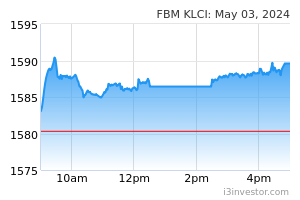Singapore retains tight policy stance as growth accelerates
Tan KW
Publish date: Mon, 14 Oct 2024, 10:15 AM
Singapore’s central bank kept its monetary settings unchanged, defying a global wave of policy easing as the city state’s economy powered ahead in the third quarter.
The Monetary Authority of Singapore (MAS), which uses the exchange rate as its main policy tool rather than interest rates, maintained the slope, width, and centre of the currency band, it said in a statement on Monday. That will keep the local dollar on an appreciating path to blunt imported price pressures.
“The risks to Singapore’s inflation outlook are more balanced compared to three months ago,” the MAS said. It assessed that the “monetary policy settings are for now still consistent with medium-term price stability”.
The Singapore dollar climbed from a session low on the release, trading at 1.3060 against the greenback at 9.09 am local time on Monday. All but three of 13 economists surveyed by Bloomberg predicted no change to policy.
The overall “tone is not dovish at all”, said Selena Ling, the chief economist of Oversea-Chinese Banking Corp Ltd (OCBC). “If anything, there is now a concern about unit labour cost growth and hence services growth, albeit the 2% core inflation forecast for 2025 is retained.”
The decision contrasts with interest-rate cuts in much of the developed world, with policymakers from Washington to Wellington opting for outsized 50-basis-point moves at their latest meetings. That reflects cooling inflation elsewhere that’s yet to fully translate to Singapore, which imports many basic goods.
The MAS’ parameters for the Singapore dollar’s nominal effective exchange rate, or S$NEER, have been unchanged for the past year.
The monetary authority guides the local dollar against a basket of its major trading partners, and adjusts the pace of its appreciation or depreciation by changing the slope, width and centre of the currency band. It doesn’t disclose details of the basket, the band nor the pace of appreciation or depreciation.
Alongside the MAS decision, separate data showed Singapore’s economy accelerated last quarter, driven by the manufacturing and construction sectors.
Gross domestic product (GDP) advanced 2.1% in the three months through September from the prior quarter, the Ministry of Trade and Industry said. From a year earlier, the economy expanded 4.1% in the period, versus economists’ estimate of 3.8%.
The MAS still expects GDP growth to come in around the upper end of its 2% to 3% forecast range this year, saying the negative output gap is projected to close later in 2024.
“Next year, the Singapore economy is currently forecast to expand at close to its potential rate,” the MAS said. “However, there is significant uncertainty around the economic outlook, reflecting continuing risks in the external environment.”
A sharp escalation in geopolitical and trade conflicts, the pace and impact of global macroeconomic policy easing and the durability of recent electronics upturn are potential sources of uncertainties, the MAS said.
While consumer prices in Singapore have edged lower over 2024, they remain elevated. The central bank’s preferred core inflation gauge – which includes food and fuel prices, and excludes accommodation and private transport — picked up in August to 2.7% and exceeded estimates.
The MAS doesn’t have an explicit inflation target, though it has said that core inflation of just under 2% on average “is consistent” with price stability in the economy.
In Monday’s release, the authority said core inflation momentum “is expected to remain contained” in the fourth quarter and should end the year around 2%.
- Bloomberg
More articles on Good Articles to Share
Created by Tan KW | Jan 05, 2025
Created by Tan KW | Jan 05, 2025
Created by Tan KW | Jan 05, 2025
Created by Tan KW | Jan 05, 2025



















